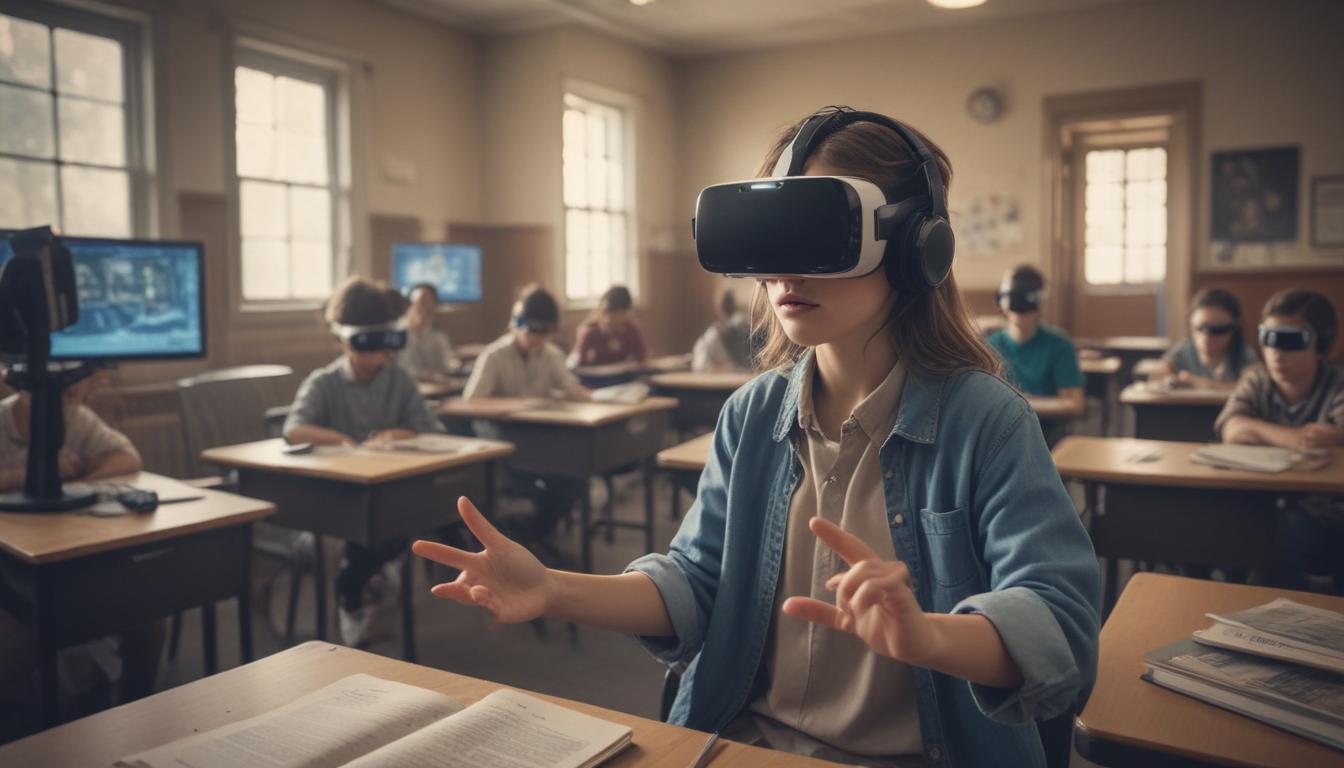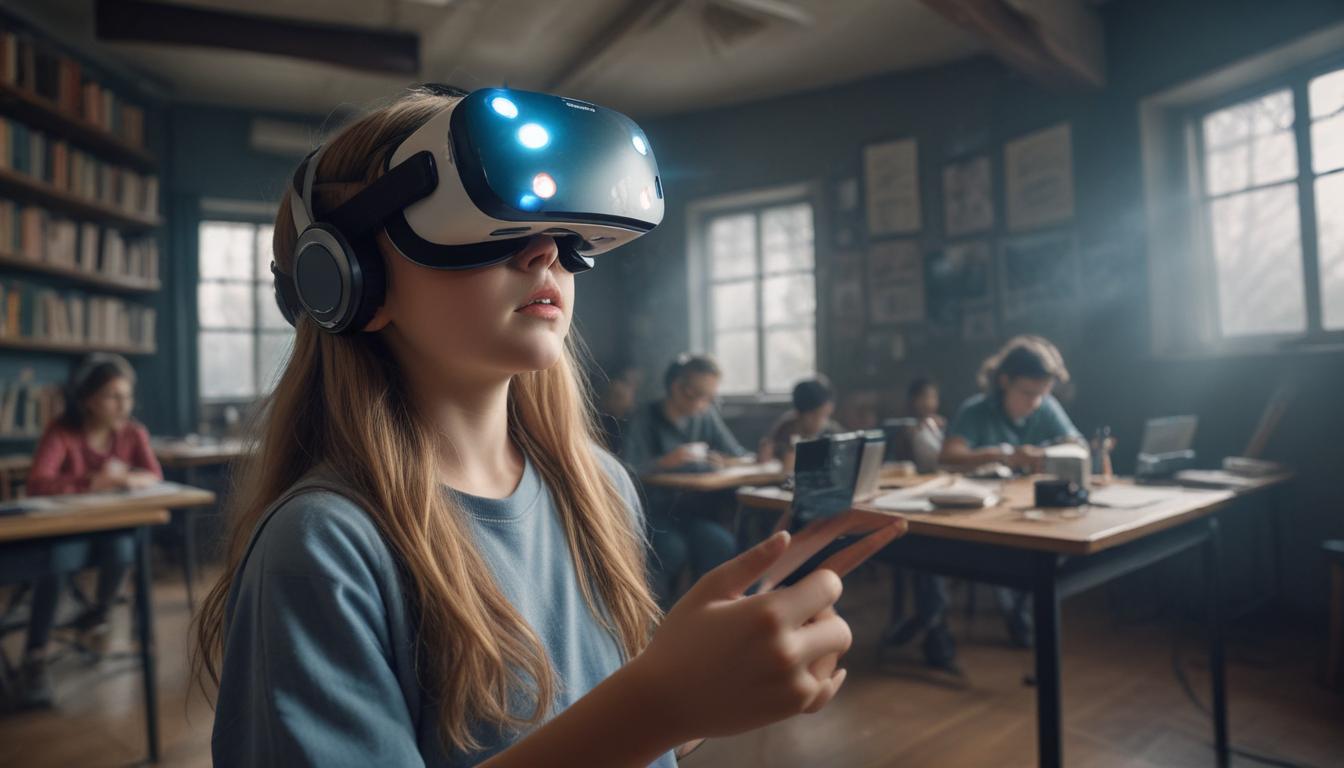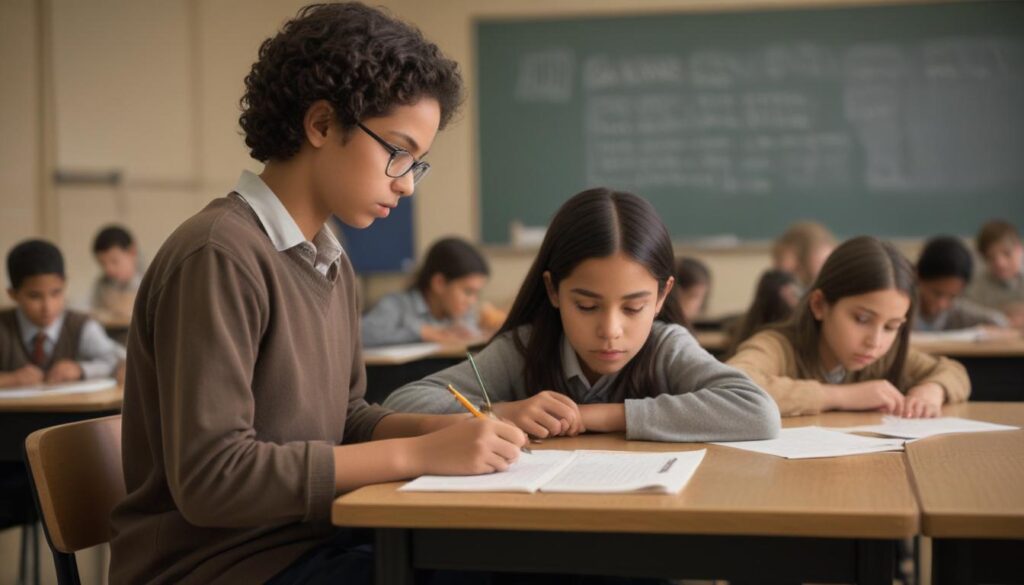Now Reading: VR The Next Step in Education
- 01
VR The Next Step in Education
VR The Next Step in Education

The Future of Virtual Reality in Education Beyond the Textbook
Are you an educator struggling to keep students engaged? Do you find that traditional textbooks and lectures fail to capture the imagination of a generation raised on interactive digital media? It’s a common challenge trying to make abstract concepts like historical events, complex biological processes, or distant planets feel real and relevant from within the four walls of a classroom. The gap between reading about something and truly understanding it can feel vast, leaving both teachers and students feeling frustrated and uninspired.
Imagine, however, if you could hand your students a key to unlock any world imaginable. What if they could walk the streets of ancient Rome, shrink down to explore the human circulatory system, or conduct a chemistry experiment without any physical risk? This is the solution virtual reality (VR) brings to education. VR is not just another tech gadget; it is a transformative tool that shifts learning from a passive activity to an active, immersive experience. It bridges the gap between theory and practice, creating unforgettable educational journeys that ignite curiosity and foster a deep, lasting understanding.
Breaking Down Traditional Classroom Barriers
For centuries, the primary tools of education have been two-dimensional. We rely on books, whiteboards, and more recently, computer screens to convey complex information. While effective to a degree, this method has inherent limitations. It forces students to build mental models of things they have never seen, a process that can be difficult and lead to disengagement. Even a well-produced video is still a passive experience; the student is merely an observer, separated from the subject by a screen. This passive observation is a significant barrier to true comprehension and long-term memory retention.
Virtual reality shatters this barrier by dissolving the screen and placing the student directly inside the learning environment. It leverages our brain’s natural ability to learn through experience and exploration. Instead of reading about the skeletal system, a student can assemble a virtual human skeleton piece by piece. Instead of looking at a map of the solar system, they can fly a spaceship past Jupiter. This active participation turns learning into an adventure, making the information more meaningful, memorable, and far more engaging than any textbook could ever be.
How VR is Revolutionizing the Learning Experience
The impact of VR is not limited to a single subject; its applications are as vast as the curriculum itself. By providing experiences that are impossible in the real world, it enhances comprehension, develops critical skills, and makes education more equitable and accessible. From science and history to technical training, VR is fundamentally changing what it means to learn.
Making the Abstract Concrete
In subjects like science and history, many core concepts are abstract or inaccessible. VR makes them tangible. A biology student can journey inside a plant cell to witness photosynthesis firsthand, providing a level of insight that a static diagram cannot match. In chemistry, students can manipulate molecules and watch chemical reactions in a controlled, 3D space, building an intuitive understanding of complex principles without the danger of a real lab.
This same power applies to the humanities. Imagine a history lesson where students don’t just read about Martin Luther King Jr.’s “I Have a Dream” speech but stand in the virtual crowd at the Lincoln Memorial. They can explore the trenches of World War I or witness the construction of the pyramids, transforming historical facts into lived, emotional experiences. This deep immersion creates a powerful connection to the material, fostering empathy and a genuine interest that drives a desire to learn more.
Developing Practical Skills in a Safe Environment
Beyond academic subjects, VR is a game-changer for vocational and professional training. Aspiring mechanics can practice disassembling and reassembling a car engine an infinite number of times without needing expensive physical equipment. Medical students can perform complex surgical procedures in a risk-free virtual operating room, honing their skills and building confidence before ever touching a real patient. This ability to practice, fail, and repeat in a safe environment accelerates the learning curve dramatically.
Furthermore, this technology extends to the development of soft skills. Students can practice public speaking in front of a dynamic virtual audience that reacts to their performance, helping them overcome anxiety and refine their presentation abilities. By simulating high-stakes scenarios in a low-stakes environment, VR prepares students for the real-world challenges of their future careers in a way that was never before possible.

Challenges and the Road Ahead
Despite its immense potential, the path to widespread VR adoption in schools is not without obstacles. The primary hurdles are cost and accessibility. High-quality VR headsets and the powerful computers needed to run them represent a significant investment, creating a potential “digital divide” between well-funded and under-resourced schools. Additionally, there is a need for robust teacher training to ensure educators are comfortable and proficient with the technology, allowing them to integrate it effectively into their lesson plans rather than using it as a novelty.
However, these challenges are steadily being addressed. The cost of VR hardware continues to fall, making it more accessible each year. Simultaneously, a growing ecosystem of educational software companies is creating intuitive, curriculum-aligned VR content that is easy for teachers to deploy. As more schools pilot VR programs and demonstrate their profound impact on student outcomes, the momentum for wider adoption will only grow. The road ahead involves collaboration between technologists, educators, and policymakers to ensure this powerful tool becomes a standard part of the educational landscape for all students.





































